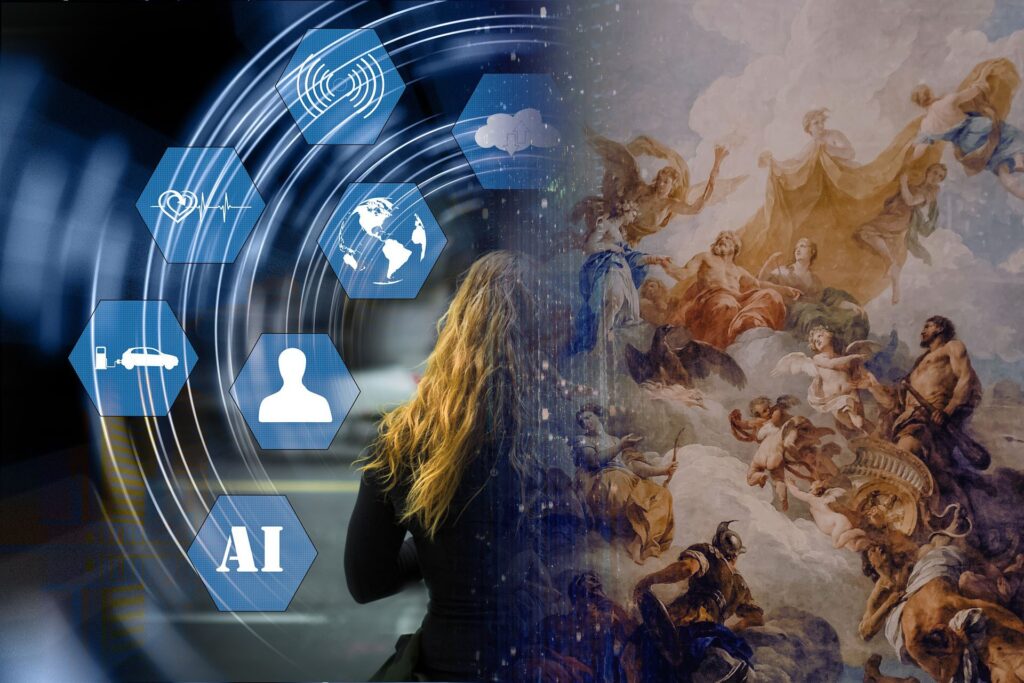
The Intersection of Technology and Art: Innovative Trends in BFA Education
The world of art is no longer confined to canvases and studios. Today, there’s a vibrant space where technology and art converge, opening doors to new forms of creative expression. This evolution is reflected in the changing landscape of Bachelor of Fine Arts (BFA) programmes. Gone are the days of solely traditional methods. BFA courses are embracing cutting-edge technologies, equipping students with the skills to thrive in this dynamic field.
The Evolution of BFA Programmes
Traditionally, BFA programmes focused on core artistic disciplines like painting, sculpture, and printmaking. While these remain foundational, BFA colleges in Pune and across India now incorporate digital tools and emerging technologies. This holistic approach equips students with a broader skillset, preparing them for contemporary art careers.
The Integration of Digital Tools
From animation and graphic design software to 3D printing and virtual reality, digital tools are transforming how art is created, presented, and experienced. BFA courses with a strong emphasis on these tools empower students to:
- Experiment with New Forms: Digital tools allow artists to push boundaries and explore new creative possibilities. BFA programmes that integrate these tools introduce students to interactive installations, video art, and digital sculpting, fostering a spirit of innovation.
- Enhance Traditional Techniques: Technology can complement traditional art forms. For instance, graphic design software can enhance illustrations, while 3D printing can create unique sculptural elements.
Preparing Students for a Technological Future
By incorporating technology into the BFA curriculum, colleges are preparing students for a future where art and technology are inextricably linked. Here’s how:
- Developing Digital Fluency: A strong foundation in digital tools is essential for artists to navigate the contemporary art world. BFA courses equip students with the skills to use industry-standard software, ensuring they can seamlessly integrate technology into their artistic practice.
- Fostering Critical Thinking: Technology raises new questions about the role and purpose of art. BFA programmes that encourage critical thinking about the use of technology in art help students develop a sophisticated understanding of this dynamic relationship.
- Enhancing Collaboration: Technology facilitates collaboration between artists across geographical boundaries. BFA courses can introduce students to online platforms and tools that enable them to connect and work with other artists, fostering a global creative network.
- Exploring New Markets: The digital world offers a plethora of new avenues for artists to showcase and sell their work. BFA programmes can guide students in creating online portfolios, exploring NFT (Non-Fungible Token) marketplaces, and navigating the digital art market.
- Building Problem-Solving Skills: Technology often presents challenges. BFA programmes that integrate technology can help students develop problem-solving skills as they learn to troubleshoot software issues and find creative solutions using digital tools.
- Encouraging Experimentation: The ever-evolving nature of technology demands a spirit of experimentation. BFA courses that encourage students to explore new and emerging technologies foster creativity and adaptability, crucial skills for an artistic career.
- Preparing for Future Careers: Technology is opening doors to new BFA careers. BFA programmes that stay ahead of the curve can equip students with the skills needed for careers like animation, game design, user experience (UX) design, and virtual reality art creation.
Emerging Trends in BFA Specialisations
BFA programmes are constantly evolving to reflect the latest trends in art and technology. Here are some exciting new specialisations gaining traction:
- Digital Sculpture and Fabrication: This specialisation allows students to explore 3D printing, laser cutting, and other digital fabrication techniques to create unique sculptural forms.
- Interactive Media: This specialisation focuses on creating interactive art installations and experiences that use technology to engage viewers dynamically.
- Game Art and Design: This specialisation equips students with the skills to create compelling visuals, characters, and environments for video games.
- Motion Graphics and Animation: This specialisation focuses on the creation of animated content for a variety of purposes, including advertising, film, and television.
By embracing technology and fostering innovation, BFA programmes prepare the next generation of artists for a future filled with exciting creative possibilities. If you’re passionate about art and eager to explore the intersection of technology and creativity, consider pursuing a BFA programme at a college that prioritises these trends. Research BFA course fees, examine the curriculum for BFA colleges in Pune like MIT-WPU Pune, and find a programme that aligns with your artistic vision and technological aspirations. The future of art is brimming with possibilities, and a BFA programme that integrates technology can be your launchpad into this exciting world.
FAQ’s
What is the intersection of art design and technology?
The intersection of art design and technology involves blending creative artistic concepts with innovative digital tools to produce contemporary multimedia experiences.
How can technology be innovative in terms of arts?
Technology innovates in arts by enabling new forms of expression, interactive experiences, digital mediums, and enhanced accessibility for artists and audiences.
What is the connection between art and technology?
Art and technology connect by merging creativity with digital tools, fostering new artistic expressions, interactive experiences, and innovative multimedia forms.
